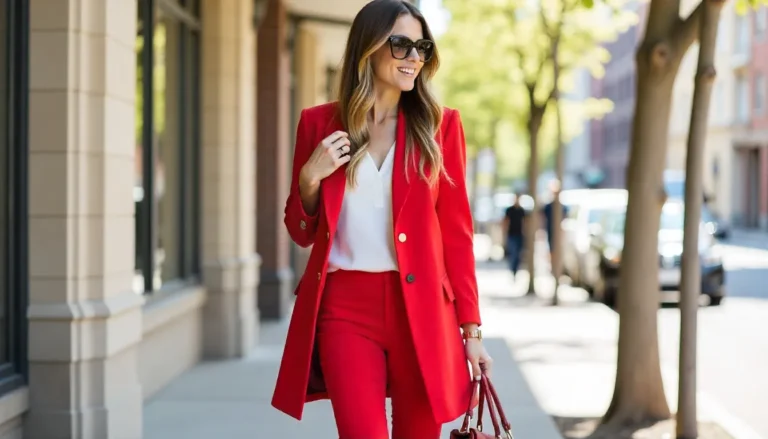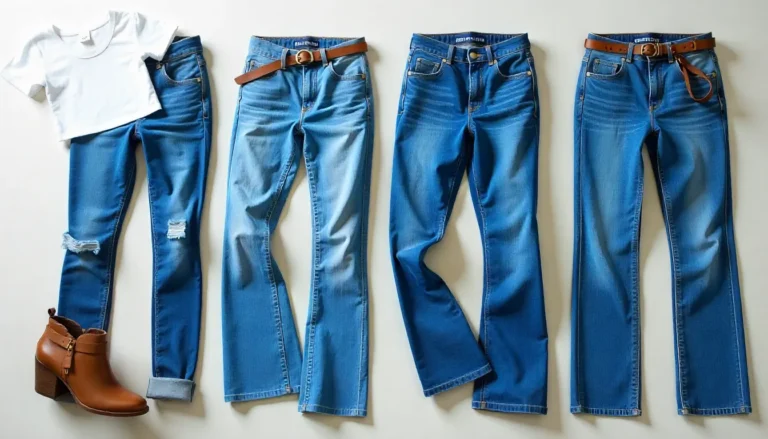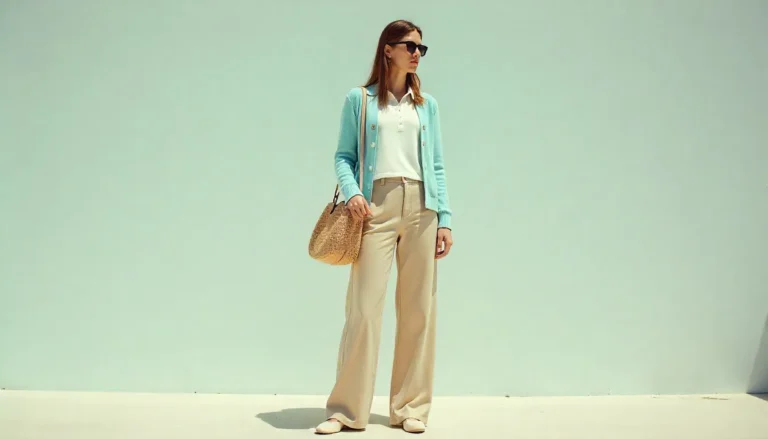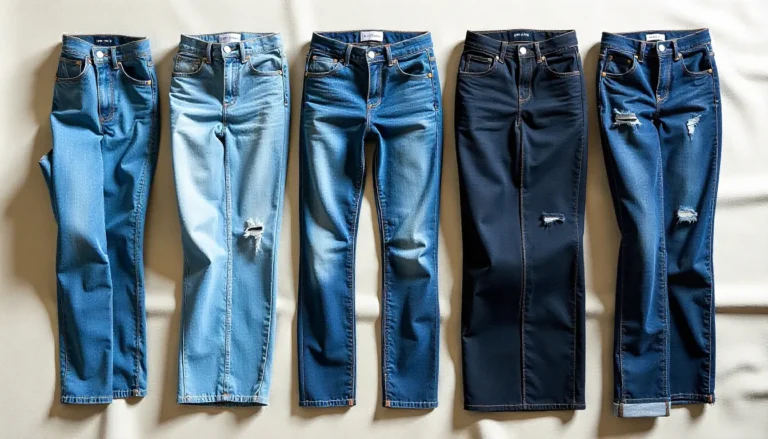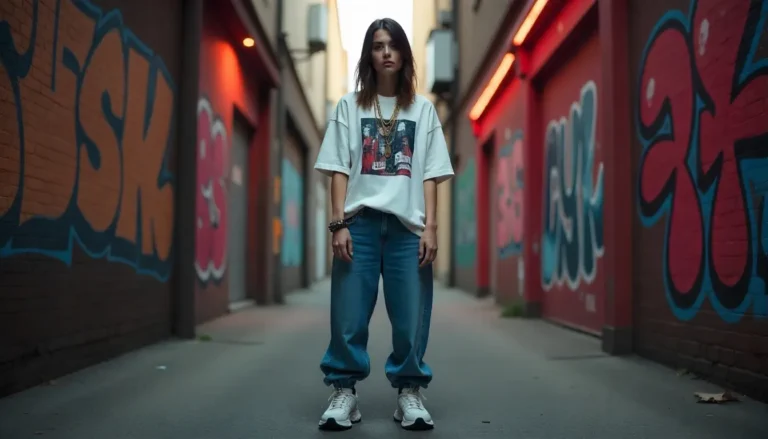The Barn Jacket: Rugged Heritage Meets Modern Refinement

Few garments embody the perfect blend of practicality, heritage, and understated sophistication like the barn jacket. Once designed as a hardworking layer for farmers, outdoorsmen, and craftsmen, this classic outerwear piece has evolved into a symbol of authentic style and durable comfort. Its charm lies not in trend or extravagance, but in its quiet confidence a reflection of honest craftsmanship and enduring appeal.
A Heritage Rooted in Utility: The Birth of the Barn Jacket

The barn jacket’s story begins in the heart of rural America a time and place where necessity shaped design, and clothing was measured not by trend but by endurance. Emerging in the early 20th century, the barn jacket was conceived as a practical layer for farmers, ranchers, and craftsmen whose livelihoods depended on the land. These were individuals who faced unpredictable climates, demanding labor, and long hours outdoors, requiring garments that could withstand abrasion, moisture, and cold without compromising comfort.
Constructed from heavy-duty cotton canvas or cotton duck, the barn jacket was designed for toughness. These natural fibers were tightly woven to resist wind and repel dirt, while remaining breathable ideal for physical labor. Early iterations often featured reinforced stitching, button or snap-front closures, and spacious patch pockets for tools and essentials. Every element served a function: from the sturdy seams to the weather-resistant fabric, the barn jacket was built to last, season after season.
The interior design was just as thoughtful. Many traditional barn jackets were lined with quilted flannel or corduroy, materials that added insulation and comfort without unnecessary bulk. The corduroy collar, now one of the jacket’s signature aesthetic details, originally served a simple purpose to provide warmth and softness where the fabric met the neck, especially during cold mornings on the farm. These small but deliberate touches reflected a deeper design philosophy: utility as beauty.
As industrialization and urbanization swept across America, the barn jacket began to transcend its agricultural roots. Brands like Carhartt, L.L.Bean, Orvis, and Filson recognized its timeless functionality and began adapting it for broader audiences. Their iterations maintained the rugged construction but introduced refined silhouettes and materials, bridging the gap between rural workwear and everyday fashion.
By mid-century, the barn jacket had evolved into a symbol of honest craftsmanship and American resilience. Its charm lay in its authenticity a rare quality that appealed not only to laborers but also to intellectuals, artists, and city dwellers yearning for something real amid modern artifice. Whether worn by a Maine fisherman, a Vermont craftsman, or a New York creative, the barn jacket carried with it an unspoken narrative of self-reliance, humility, and enduring style.
Today, the barn jacket continues to embody the values of its origin durability, comfort, and quiet confidence. It stands as a bridge between past and present, a garment that honors its working-class heritage while effortlessly adapting to contemporary wardrobes. In a world often driven by fast fashion, the barn jacket remains a testament to a time when clothing was made to serve, endure, and tell a story.
Design Elements That Define the Barn Jacket: Function Meets Form

At first glance, the barn jacket may seem simple but its design is a masterclass in purposeful construction. Every stitch, lining, and pocket speaks to a legacy of practicality and thoughtful craftsmanship. Born from the needs of hardworking rural communities, the barn jacket evolved not through fleeting trends but through decades of refinement. Its design reflects a philosophy that values durability, comfort, and timeless appeal over extravagance.
1. Rugged Exterior: The Canvas or Cotton Duck Shell
The most defining feature of the barn jacket is its tough, weather-resistant outer shell. Traditionally made from cotton canvas or cotton duck, this tightly woven fabric is both breathable and resilient, capable of withstanding years of wear. Over time, it softens and molds to the body, creating a personal patina a hallmark of authenticity and age-earned beauty.
Modern versions often feature waxed cotton finishes, providing additional protection against rain and wind while maintaining the natural texture of the material. This wax coating not only enhances function but also deepens the fabric’s color and character, allowing the jacket to age gracefully with each season.
2. The Corduroy Collar: Comfort and Classic Character
One of the most recognizable details of the barn jacket is its contrasting corduroy collar. Originally introduced for warmth and comfort, the soft ridged texture prevents irritation at the neck when layered over flannel shirts or wool sweaters. Beyond its utility, the corduroy collar has become a signature aesthetic touch, instantly evoking the jacket’s rural heritage and understated sophistication.
Some variations feature shearling-lined or stand-up collars, designed for added insulation in colder climates. But the traditional corduroy collar remains the most iconic a quiet reminder of the barn jacket’s roots in the honest rhythms of country life.
3. Quilted or Flannel Lining: Warmth Without Bulk
Inside, the barn jacket is designed for comfort and insulation. Quilted linings filled with lightweight padding or soft flannel interiors ensure warmth without restricting movement. These linings are not merely functional they enhance the tactile experience, offering the kind of warmth that feels lived-in and familiar.
The interplay between the rugged exterior and cozy interior creates a balance that defines the jacket’s enduring appeal. Whether worn over workwear in a barn or layered over denim and knitwear in the city, it provides the perfect harmony between protection and comfort.
4. Utility Pockets: Form That Serves Function
The barn jacket’s pockets are more than decorative details they are integral to its identity. Large patch pockets at the front were originally designed for carrying tools, gloves, and small essentials. Often lined with corduroy or reinforced stitching, they were built to endure daily use. Some models also feature hand-warmer pockets or an interior chest pocket, providing practical storage without compromising the jacket’s clean silhouette.
These design choices make the barn jacket not just stylish but highly functional a piece equally suited for outdoor work, travel, or everyday wear.
5. Button or Snap Front Closure: A Nod to Tradition
Unlike modern zippers, the barn jacket traditionally features button or snap closures, allowing for easy adjustment and repair. This design echoes its early 20th-century origins, when durability and ease of maintenance were crucial. Many modern interpretations now include dual closures a zipper with a button storm flap combining classic aesthetics with modern convenience.
6. Earthy Tones: Colors That Tell a Story
The barn jacket’s color palette remains rooted in nature and authenticity. Shades like tan, olive, brown, and navy dominate, reflecting its outdoor heritage. These hues age gracefully, gaining depth and variation over time much like the landscapes that inspired them.
While newer designs experiment with contemporary tones such as charcoal, rust, or even deep forest green, the traditional earthy palette continues to define its classic charm.
In essence, the barn jacket’s enduring design lies in its balance of functionality, heritage, and understated elegance. It doesn’t seek attention through embellishment — instead, it commands admiration through authenticity. From the corduroy collar to the canvas shell, each feature tells a story of craftsmanship born from necessity and refined by time.
From Workwear to Wardrobe: The Barn Jacket’s Cultural Evolution

The barn jacket’s journey from humble workwear to a cultural style icon is a story of transformation one that mirrors the changing relationship between utility and fashion. What was once worn purely for protection against the elements has become a symbol of authenticity, craftsmanship, and quiet sophistication. Over the decades, this unassuming jacket has crossed boundaries from rural barns to city streets, from farmers to fashion editors without ever losing its soul.
1. The Workwear Foundation: Built on Purpose
In its earliest form, the barn jacket was a uniform of resilience. Worn by American farmers, ranchers, and tradesmen, it served as a shield against wind, rain, and cold. It wasn’t designed to impress it was designed to endure. This utilitarian honesty gave the jacket an inherent dignity that modern fashion would later romanticize.
Its practical nature made it indispensable: the sturdy fabric could withstand years of labor, the deep pockets carried tools and gloves, and the relaxed fit allowed for free movement. The barn jacket became a companion, not just a garment one that aged alongside its owner, softening with time and earning a patina of character that no designer distressing could replicate.
2. The Rise of Americana Style: From Fields to Fashion
By the mid-20th century, America began to celebrate its rural and working-class roots through fashion. Magazines and cultural icons embraced the “Americana aesthetic” a style grounded in heritage, simplicity, and durability. The barn jacket, with its honest construction and natural materials, fit seamlessly into this narrative.
Brands such as L.L.Bean, Orvis, Carhartt, and Filson became household names, promoting an image of rugged sophistication that appealed as much to city dwellers as to country workers. The barn jacket was suddenly not just practical it was aspirational. Wearing one became a statement of authenticity and grounded masculinity (or effortless, natural femininity).
Even high-fashion houses began to reinterpret it. Designers saw in the barn jacket an opportunity to merge blue-collar utility with refined tailoring, creating hybrid versions that blurred the line between workwear and luxury. What began on the farm found its way into the fashion capitals of New York, Paris, and Milan a testament to its universal appeal.
3. The Artistic Embrace: Symbol of Authentic Living
As time went on, the barn jacket found favor beyond the fashion world among artists, writers, and creatives who valued its quiet symbolism. It represented authenticity, humility, and creative independence. Worn paint-streaked in studios or casually layered over sweaters in cafés, it became a badge of individuality.
In the 1970s and 1980s, the jacket’s rugged charm aligned perfectly with the rise of heritage fashion a movement that rejected mass production and celebrated craftsmanship. This renewed appreciation for durability and detail made the barn jacket not just clothing, but a philosophy of living: simple, enduring, and real.
4. The Urban Revival: Practicality Meets Modern Style
In the 21st century, as cities began to crave authenticity and sustainability, the barn jacket experienced a powerful revival. Streetwear enthusiasts, outdoor adventurers, and minimalist dressers alike embraced it for its effortless adaptability. Whether paired with jeans and boots for a casual weekend or layered over knitwear for an urban commute, it offered a rare blend of heritage and modernity.
Contemporary brands like Patagonia, Barbour, and Ralph Lauren have reinterpreted the classic silhouette through the lens of modern design experimenting with technical fabrics, gender-neutral cuts, and sustainable production. Yet, despite these innovations, the essence remains the same: a jacket made for living, not just for show.
5. A Cultural Symbol of Authenticity and Endurance
What makes the barn jacket timeless is its ability to carry emotion through simplicity. It doesn’t rely on logos or extravagance; its appeal lies in its integrity. To wear one is to embrace a connection to the past to a lineage of craftsmanship, hard work, and humility.
In a world of fleeting trends, the barn jacket stands as an emblem of steadfastness. It represents a way of dressing and living that values longevity over luxury, and authenticity over artifice. Whether worn by a farmer in Vermont, a designer in Brooklyn, or an artist in Kyoto, the message remains the same: true style is built on character.
Modern Interpretations: The Barn Jacket in Contemporary Fashion

The barn jacket has never been frozen in time. Though its roots reach deep into America’s pastoral past, its spirit continues to evolve adapting to the aesthetic language of each new generation. In today’s fashion landscape, where heritage meets innovation and nostalgia meets sustainability, the barn jacket stands as a masterclass in timeless reinvention.
1. A Reimagined Classic for Modern Wardrobes
Contemporary designers have found creative ways to reinterpret the barn jacket while preserving its essence. They’ve slimmed the silhouette, refined the proportions, and introduced new materials such as waxed cotton, organic twill, recycled nylon, and even water-resistant synthetics. These innovations give the jacket a lighter feel, greater versatility, and a sleekness that fits seamlessly into urban wardrobes.
Brands like Engineered Garments, A.P.C., and Barbour International have created modern versions that retain the signature patch pockets and corduroy collars, but with sharper tailoring and minimalist finishes. Others, such as Patagonia and Everlane, have reimagined the barn jacket through an eco-conscious lens, emphasizing sustainable production, ethical sourcing, and long-lasting wear aligning perfectly with the slow fashion movement.
2. The Gender-Neutral Appeal
One of the barn jacket’s most powerful evolutions is its embrace of gender inclusivity. No longer confined to a masculine archetype of rugged workwear, the jacket has been adopted and adapted by women, nonbinary individuals, and anyone drawn to its functional beauty.
Modern stylists pair it with everything from flowy dresses and combat boots to tailored trousers and sneakers. Its straight lines and balanced proportions make it a natural fit for gender-neutral fashion, where comfort and expression take precedence over traditional form. The barn jacket has become a quiet symbol of versatility a canvas upon which anyone can project their identity.
3. The Rise of the Heritage-Modern Hybrid
Today’s designers are less interested in nostalgia for nostalgia’s sake and more in blending history with modern context. The barn jacket, therefore, is no longer just a rustic relic it’s an anchor piece in a modern uniform.
Streetwear brands have paired it with hoodies and cargo pants. Luxury houses like Gucci and Burberry have played with textures and bold color palettes, infusing the jacket with a sense of high-end irony. Meanwhile, minimalist brands such as Norse Projects and COS have stripped it down to its bare essentials, emphasizing clean lines and tonal color schemes that speak to quiet luxury.
This intersection between old and new has made the barn jacket a transcultural icon equally at home in Tokyo as in Maine, in Paris as in Portland.
4. Layering: The Modern Styling Language
In contemporary fashion, layering is an art form and the barn jacket is its ideal medium. Its boxy frame and lightweight lining make it perfect for transitional weather and modular dressing.
- Over a hoodie or denim shirt, it channels casual streetwear cool.
- Layered atop a turtleneck and blazer, it exudes understated sophistication.
- Worn with cargo pants or chinos, it becomes the centerpiece of utilitarian chic.
This adaptability has made it a favorite among stylists and influencers alike, who use it to balance texture, tone, and silhouette in curated, effortless looks.
5. Sustainability and the Return to Quality
As fashion turns toward sustainability, the barn jacket has reemerged as a symbol of mindful consumption. Its durability and repair-friendly design encourage a culture of longevity a quiet rebellion against fast fashion. Many brands now offer waxed or repairable versions, designed to be rewaxed, re-stitched, and worn for decades.
This aligns perfectly with a growing cultural shift: consumers want fewer, better things. The barn jacket, built to endure and age beautifully, fulfills that desire. It’s not a seasonal purchase it’s an investment in a personal history.
6. The Barn Jacket as a Modern Symbol
In the modern era, the barn jacket represents more than warmth and function. It stands as a metaphor for balance between tradition and progress, work and leisure, simplicity and sophistication.
It’s the garment equivalent of quiet confidence: never flashy, never loud, but always present. To wear a barn jacket today is to make a statement not of wealth or fashion status, but of values. It’s a nod to authenticity, craft, and the enduring beauty of well-made things.
Styling the Barn Jacket: How to Wear It Today
The barn jacket’s magic lies in its effortless adaptability a piece that feels just as natural in a bustling city café as it does on a countryside trail. It’s one of those rare garments that can shift personalities with the outfit it accompanies, transforming from rugged to refined, casual to sophisticated, without ever losing its core character. Styling the barn jacket today is about balance blending its heritage roots with modern silhouettes, textures, and attitudes.
1. The Effortless Everyday Look
For those who love timeless simplicity, the barn jacket pairs beautifully with denim and flannel a nod to its rustic origins. A well-fitted pair of blue jeans, a plaid shirt, and leather boots create a look that’s relaxed yet grounded. Add a neutral-toned barn jacket khaki, olive, or tan and you’ve got an outfit that feels authentic and unpretentious.
On cooler days, swap the flannel for a chunky knit sweater or a henley shirt, and finish the look with a beanie or wool cap. This is the kind of effortless style that speaks softly but leaves a strong impression.
2. Urban Utility
In the city, the barn jacket takes on a different kind of power minimalist, functional, and effortlessly cool. Pair it with black jeans or tailored chinos, a crisp white T-shirt, and Chelsea boots for a sleek, modern edge. Layer a hoodie or turtleneck underneath for dimension and warmth.
For an even more refined touch, go monochrome: an olive jacket over olive or beige trousers creates a streamlined, contemporary look. The key here is contrast the jacket’s ruggedness softens the polish of citywear, giving off an air of quiet confidence.
3. The Smart-Casual Balance
The barn jacket can also bridge the gap between casual and tailored. Wear it over an Oxford shirt and chinos, add a knit tieorwool scarf, and finish with leather loafers or brogues. This combination is perfect for creative professionals or weekend outings relaxed but still composed.
A dark navy or charcoal barn jacket, especially one with a slimmer fit, complements the structure of smart-casual attire beautifully. You can even layer it over a light blazer for a refined, European-inspired aesthetic.
4. Feminine Edge
The barn jacket’s structured shape and neutral tones make it surprisingly versatile in women’s fashion. Style it with a flowy midi dress and ankle boots for a contrast of rugged and romantic. Add a belt around the waist to accentuate shape or roll up the sleeves for an effortlessly undone vibe.
For something bolder, try pairing a tan or rust-colored barn jacket with wide-leg trousers and a fitted turtleneck. The look is modern, empowering, and subtly vintage perfect for fall transitions or creative workspaces.
5. Streetwear-Inspired Layering
In modern street style, the barn jacket has become a layering essential. Throw it over a graphic hoodie, pair with cargo pants or joggers, and complete the look with sneakers or work boots. Choose a jacket with corduroy details or a quilted lining for added texture.
Add accessories like a beanie, crossbody bag, or baseball cap for that effortlessly curated look. It’s a blend of practicality and personalitya wearable reflection of individuality rooted in utility.
6. Seasonal Versatility
What makes the barn jacket truly timeless is its ability to adapt across seasons:
- Spring: Pair it with light denim and a striped tee for coastal-inspired casualness.
- Autumn: Layer it over sweaters and scarves for cozy sophistication.
- Winter: Choose a flannel-lined or quilted version to wear over thick knits.
- Summer evenings: A lightweight, unlined barn jacket offers the perfect transitional layer when temperatures drop.
No matter the season, the barn jacket never feels out of place it simply shifts tone to match the moment.
7. The Modern Statement
Ultimately, wearing a barn jacket today isn’t just about fashion it’s about intentional style. It represents a quiet return to quality, craft, and character. Whether dressed up or dressed down, it tells a story of balance: between old and new, rugged and refined, practicality and personality.
The barn jacket doesn’t chase attention. It earns admiration through authenticity. In an age of trends that come and go, it remains what it has always been a dependable, stylish companion for those who value meaning over excess.
Conclusion:
The barn jacket is not just an article of clothing it’s a reflection of authenticity, endurance, and quiet sophistication. From the rolling farmlands of America to the bustling streets of modern cities, it continues to bridge worlds and generations. Its appeal lies in its honesty in the way it values practicality without sacrificing grace.
In every thread lies a story of heritage and craftsmanship a reminder that true style doesn’t shout; it endures. The barn jacket stands as a symbol of what fashion should strive to be: purposeful, beautiful, and built to last.


